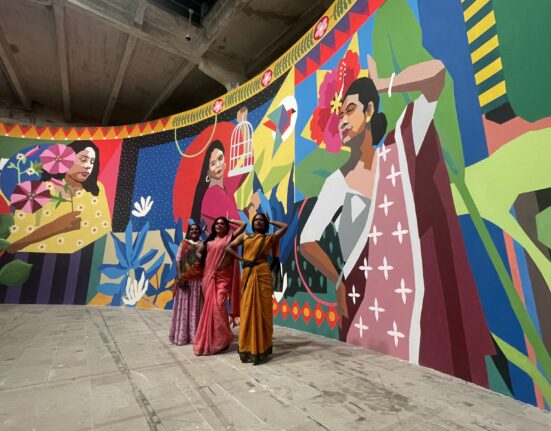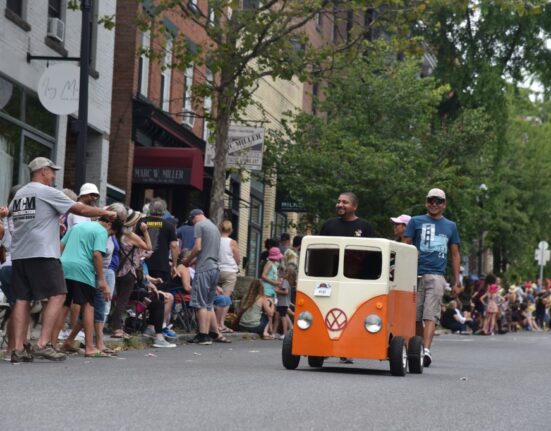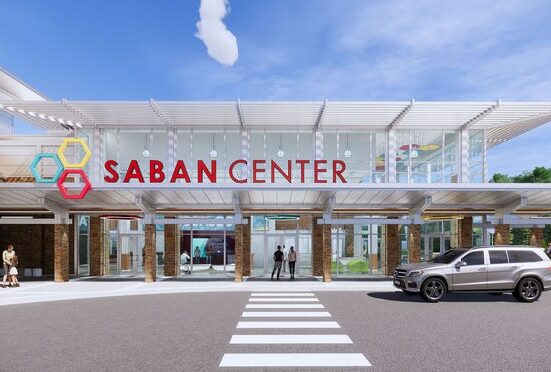Santa Fe has no shortage of art spaces, but new ventures can still feel like a breath of fresh air. Take the nonprofit Institute of Contemporary Art Santa Fe, which opened its doors earlier this month with a show of figurative works from sculptor Hana Kostis dubbed An Incoherent Body. Not only does ICA’s Director and Curator Chiara Giovando hope to create a hub that supports the artistic process, she wants to consider the well-being of artists. SFR sat down with Giovando to learn more about the new venture. This interview has been edited for clarity and concision.
SFR: What exactly is the Institute of Contemporary Art?
Chiaro Giovando: Historically, we’re a part of the lineage of ICAs that exist all over the world. The first-ever ICA was founded in Boston in 1936, and it was sort of in response to the New York [Museum of Modern Art]. It was designed to be a place that held museum-caliber exhibitions, and really was a more radical space for, you know, ‘modern’ artists. The second was ICA London, and it had this incredible history of being a place where innovation happened. I really wanted to be a part of that lineage. They all have a similar through-line, but there is no official affiliation between ICAs.
What’s the mission you are looking to accomplish in the arts community?
Our mission is to bridge that space between new commissions and the ability to respond more immediately to our community. A lot of museums are programming five years out and don’t have that kind of flexibility. We want to host both high-caliber exhibitions and also respond immediately to a project someone’s working on. Someone can bring a performance or workshop proposal and we’ll have the capacity to host that. I’m interested in creating programming that allows a lot of different practices and perspectives into the conversation of contemporary art.
What is your artistic background, and how did you become a director and curator?
I’m both attracted to what institutional spaces can do and hold, and skeptical and critical of that. I always return to more radical spaces. I left Santa Fe when I was 17; I didn’t even have a GED, but I was reading [novelist and playwright] Kathy Acker. She taught at San Francisco Art Institute, and I asked her if I could start sitting in her classes, which were held in a bar in the Tenderloin called the Edinburgh Castle, and she said yes. She introduced me to George Kucha, a filmmaker who also taught at SFAI, and after a year of me sneaking in the back door of their classes, they said if I got my GED they would help me get into school. I did two years there. Then I went and studied at a school that’s closed now, The New College of California. One of my teachers was a Black Panther member from Oakland, David Hilliard, and I got to work on his archive. From there, I ended up becoming involved in the noise scene in San Francisco. This was the mid-’90s, and I was one of the only women in that scene playing noise at that time. I got an MFA from the film department at the California Institute of Arts and ended up being an interim assistant curator at Red Cat, which is CalArts’ museum. CalArts asked me to curate a student faculty show in Germany, which was really big, and that was the beginning of me realizing that I really love curating.
Santa Fe has numerous contemporary art spaces. How does ICA differ, if it does?
One of the things that is central to our mission is to support art practices over saleable objects. I believe that art is not just a luxury. It’s one of the earliest things that human beings have done on this planet. I want to make a space that supports and focuses on artists’ practices. We have a residency program. I built the space with a loft where an artist doing a project from out of town—or a local artist that needs a place to sleep because they’re working late—can sleep. There’s a shower; a kitchen; two artists’ studios. One of them is rented by Cara Romero, and she kind of has her messy studio where she’s shooting all of her photographs. The other is rented by Hana Kostis. It’s important for me to think about supporting artists in holistic ways and creating a space for contemporary art where there is a real ethic around generosity.
Can you tell us about any future shows?
The next exhibit is with Tony Abeyta, but we’re not doing a show of his paintings—I asked him if we could do a show about him as a collector. He’s one of the appraisers for Antiques Roadshow and the show is going to be about, ‘what does it look like when an artist collects, but also what is the process of idiosyncratic collection-making?’ He’s someone who’s been actively advising museums on how to build their own contemporary Indigenous art collections, because in the last couple of years, museums all over the country and world have realized how they’re falling short in that area.
Another upcoming project is a museum store I’m working on with [multi-disciplinary artist] Lucia Maher Tatar called Luddite, which comes from a labor movement from the 1800s. Specifically, it was these workers who were in the weaving factories in the UK and who started to destroy the mechanized weaving machines in favor of manual labor and their craft. We understand ‘luddite’ now as being kind of a negative term to describe someone who doesn’t understand technology or is against progress, but we’re embracing the idea of being against progress as a positive. It’s sort of like the slow object as a correlation to the slow food movement and looking at having fewer objects. Maybe you have four glasses, maybe they cost more, but they’re all hand-blown by someone local and they’re beautiful. It’s trying to unpack the history and current issues around labor next to the handmade objects.
How can people get involved with ICA?
You can come to events, and we’re doing a workshop that’s a part of Luddite where we’re going to build a shelving system based on an Enzo Mari design. Part of that workshop will be that you can make your own Mari piece and take it home. Everything I’m doing, it’s really just at the very beginning. There’s so much room to grow and tons of opportunities to come and volunteer and help out. We’re also at a stage where we’re trying to become sustainable, so if people want to come and support fiscally, that is huge.
Hana Kostis: An Incoherent Body: 10 am-5 pm Thurs-Sat, or by appointment, through June 30. Ica Santa Fe, 906 S. St. Francis Drive, icasantafe.org






